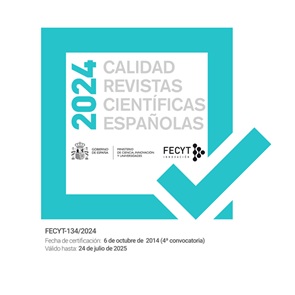DEL TO (¿TRASCENDENTAL?) AL NOSOTROS (¿INTRASCENDENTAL?) LA LECTURA DE KANT EN EL NEOKANTISMO CONTEMPORÁNEO
Resumen
Prompted, maybe, by Apel and Habermas’ reading of Kant («contemporary neokantism »), the author analyzes a passage that constitutes a contribution of Kant; namely, the passage from the «I» to the «us». The analysis of this step, although it evokes what goes from Kant to Herder and Hegel, focuses on situations such as the linguistic transformation of transcendental philosophy and Apel; the ideal community of communication, and real or sociohistoric communities; and the habermasian version of discourse consciousness. The interest of the author is to emphasize, despite the goodness of the linguistic turn, that what proves decisive is the doble step already found in Kant himself: i) from the I of the ‘pure aperception’ to the «us» of the ‘ends kingdom’, and ii) from ‘transcendental’ to ‘moral conscience’, basis of the existential irreducibility of the moral subject. The author inquires with regard to the passage from the «I» to the «us» what constitutes a contribution by Kant in this respect, perhaps relying on Apel and Habermas’ reading of Kant («contemporary neokantism»). The analysis of this step, although evoking what goes from Kant to Herder and Hegel, focuses on situations such the linguistic transformation of transcendental philosophy and Apel; the ideal community of communication, and real or sociohistoric communities; and the habermasian version of discourse consciousness. The interest of the author is to emphasize, despite the goodness of the linguistic turn, that what proves decisive is the doble step already found in Kant himself: i) from the I of the ‘pure aperception’ to the «us» of the ‘ends kingdom’, ii) from ‘transcendental’ to ‘moral conscience’, basis of the existential irreducibility of the moral subject.Descargas
-
Resumen342
-
PDF337
Las obras que se publican en esta revista están sujetas a los siguientes términos:
1. El Servicio de Publicaciones de la Universidad de Murcia (la editorial) conserva los derechos patrimoniales (copyright) de las obras publicadas, y favorece y permite la reutilización de las mismas bajo la licencia de uso indicada en el punto 2.
2. Las obras se publican en la edición electrónica de la revista bajo una licencia Creative Commons Reconocimiento-NoComercial-SinObraDerivada 3.0 España (texto legal). Se pueden copiar, usar, difundir, transmitir y exponer públicamente, siempre que: i) se cite la autoría y la fuente original de su publicación (revista, editorial y URL de la obra); ii) no se usen para fines comerciales; iii) si remezcla, transforma o crea a partir del material, no podrá distribuir el material modificado.
3. Condiciones de auto-archivo. Se permite y se anima a los autores a difundir electrónicamente las versiones pre-print (versión antes de ser evaluada) y/o post-print (versión evaluada y aceptada para su publicación) de sus obras antes de su publicación, ya que favorece su circulación y difusión más temprana y con ello un posible aumento en su citación y alcance entre la comunidad académica. Color RoMEO: verde.










